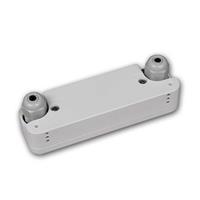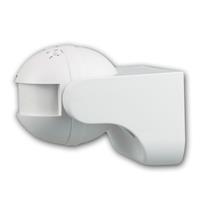Wall motion detector
Wall motion detectors are an excellent way to efficiently control light and energy while increasing your security. They react to movements in the room and automatically activate connected devices, such as lighting systems. There are various designs of wall motion detectors, which vary depending on the application and installation. The most common designs include surface-mounted motion detectors, recessed motion detectors, and wall motion detectors with integrated twilight sensors. Each design offers specific advantages tailored to the different needs of households and commercial properties.
last viewed
Surface-mounted motion detectors – flexibility and adaptability
A surface-mounted motion detector is one of the most popular options and can be easily mounted on the wall or ceiling without much installation effort. It offers numerous advantages, such as the ability to individually adjust the light sensitivity and the switch-off delay. Adjustable light sensitivity allows you to specify the brightness level at which the sensor should be activated, which is particularly useful in rooms with changing lighting conditions, such as hallways or stairwells. Furthermore, the switch-off delay allows the light to remain on for a set period of time after the last movement before automatically turning off. This feature provides additional convenience, as you don't have to remember to turn on the switch every time, while also contributing to energy savings. This makes the surface-mounted motion detector a flexible and efficient solution for your home or office.
HF and IR motion detectors – how they work and their advantages
Motion detectors can use different sensor technologies to detect movement. Two of the most common technologies are radio frequency (RF) sensors and infrared (IR) sensors. RF sensors work with continuously emitted electromagnetic waves. When an object moves, the reflection of the waves changes, and the sensor reacts. This type of motion detector offers high sensitivity and is capable of detecting movement even through walls and thin materials. IR sensors, on the other hand, utilize the heat radiation from bodies. When a warm object, such as a person, moves within the sensor's detection range, the temperature change is registered, triggering activation. Both technologies have their own advantages and are excellent choices for different applications depending on the requirements.




















